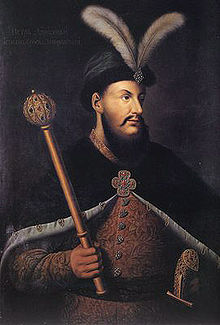Left-Bank Uprising
In 1665, Hetman Ivan Bryukhovetsky signed an agreement with Moscow, according to which the number of tsarist troops on the territory of Ukraine was increased, and also the local population had to pay taxes to the Russian treasury.
In early January 1668, Bryukhovetsky with general officers and colonels of various ranks, decided to free themselves from the tsarist power by swearing allegiance to the Turkish Sultan.
The Tatars and Cossacks overtook Romodanovsky's army at Akhtyrka and forced a three-day battle on it, their attacks were repulsed and the Russians continued to retreat according to plan, with only a couple of cities remaining under their control, but of paramount importance.
[4] Doroshenko, being euphoric from his successes, decided to move the war to the territory of Russia, he attacked the city of Sevk, but to his surprise, a new army of Prince Grigory Kurakin was waiting for him there, which completely defeated the Cossacks and the Crimeans in a two-day battle on July 3-5, which led to a rift in their camp, suffering significant losses, Doroshenko returned to the right bank, leaving behind only a small force.
However, Moscow still held the Left-Bank with an iron grip because it could keep its garrisons in key cities, for example, in 1672, Hetman Mnohohrishny was overthrown in the Baturyn coup [ru] and replaced with a more compliant Samoylovych.
[11] The main task for which the uprising was launched was the complete withdrawal of the Muscovites from the territory of Ukraine, but this failed, Romodanovsky strongly rejected this request, agreeing to other ways of granting autonomy that did not prevent the Russians from controlling the region.

